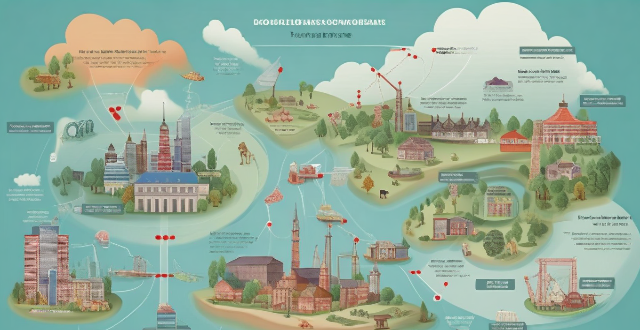This discussion explores the complexities surrounding whether developing countries can achieve the same climate goals as developed ones. It outlines the challenges such as financial constraints, infrastructure gaps, and socioeconomic barriers, but also highlights opportunities like leapfrogging technology, policy innovations, and cultural adaptability. The conclusion suggests that with international support, strategic policy-making, and a focus on sustainable development, developing nations can make significant progress towards sustainability.

Can Developing Countries Achieve the Same Climate Goals as Developed Ones?
Introduction
The global community is facing a pressing challenge in the form of climate change, which demands immediate and substantial action from all nations. The question arises: can developing countries achieve the same climate goals as developed ones? This discussion will delve into the complexities surrounding this query.
Challenges for Developing Nations
*Financial Constraints*
- Lack of Funding: Developing countries often have limited financial resources, making it difficult to invest in clean energy technologies.
- Dependency on Aid: They may rely on international aid that comes with conditions not always aligned with sustainable development.
*Infrastructure & Technology Gap*
- Existing Infrastructure: Many have infrastructure built around fossil fuels, which is expensive to replace or upgrade.
- Technological Access: There's limited access to advanced clean technology due to costs and know-how.
*Socioeconomic Considerations*
- Poverty: Addressing poverty can take precedence over long-term environmental investments.
- Education & Awareness: Lower levels of education impact understanding of climate issues and the ability to adopt new practices.
Opportunities for Developing Nations
*Leapfrogging Technology*
- Skip Old Technologies: They can potentially skip older, polluting technologies and directly adopt newer, cleaner solutions.
- Decentralized Systems: Decentralized renewable energy systems can be more accessible than upgrading centralized grids.
*Policy Innovations*
- Flexible Regulations: Younger economies might implement innovative policies without battling entrenched interests.
- International Cooperation: Collaborative efforts could provide support for transitioning to a green economy.
*Cultural & Social Mobility*
- Community-Based Solutions: Grassroots movements can drive change where top-down policies fail.
- Adaptability: Smaller, more adaptable economies can adjust to new green industries faster.
Conclusion
While developing countries face significant challenges in achieving climate goals similar to those of developed nations, there are also unique opportunities available to them. By leveraging their potential for rapid technological adoption, policy innovation, and community engagement, these nations can make strides towards sustainability in ways that may sometimes outpace traditionally developed economies. The key lies in equitable international support, smart policy-making, and a focus on sustainable development that balances immediate needs with future environmental objectives.